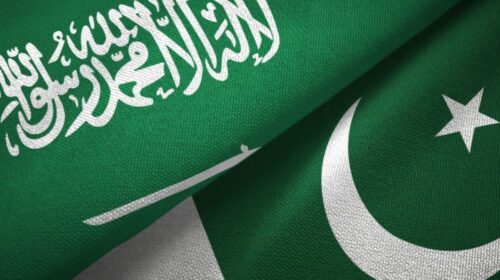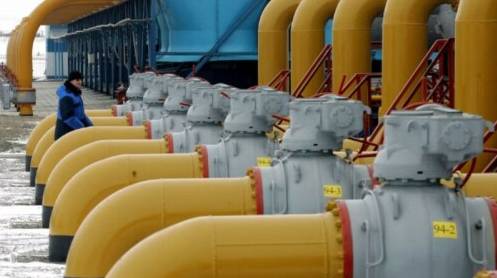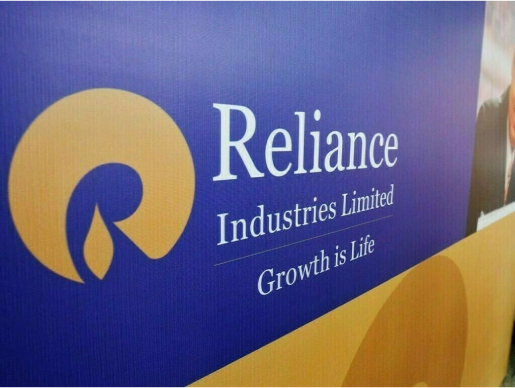The Kingdom of Saudi Arabia and the Islamic Republic of Pakistan have an exceptional relationship, rooted in the love between the two peoples, making it immune to changes in leadership. This bond has continued to strengthen over the past several decades in the political, security, economic and cultural spheres. It will be boosted further under the charismatic leadership of Mian Mohammed Shehbaz Sharif, the newly elected prime minister of Pakistan.
Sharif will soon visit the Kingdom to perform Umrah and seek the blessings of Allah and Prophet Muhammad, peace be upon him, in the holy month of Ramadan. On this occasion, he may also meet the Saudi leadership to boost the bonds of brotherhood.
Pakistan is my second home. I spent the prime of my diplomatic career as an ambassador in Islamabad between 2001 and 2009. For some years, I also served as the dean of its diplomatic corps. I am well aware of Sharif’s administrative skills as the former chief minister of Punjab for three tenures, during which he changed the face of Lahore and the rest of the province. Nawaz Sharif, his elder brother who has thrice served as prime minister, was instrumental in developing the parliamentary institutions of Pakistan and enabling it to become the only nuclear state in the Muslim world.
Pakistan is at a critical juncture today. Externally, it faces a precarious situation on its western border with Afghanistan after the US exit, while, across the eastern frontier, India’s Hindu nationalist wave endangers the fate of the Kashmiri Muslims. Internally, the serious deterioration in economic conditions not only derails political stability but also limits the country’s ability to tackle external challenges. But I am sure that Prime Minister Sharif has the ability, courage and will to take Pakistan forward meaningfully. I also have no doubt that he can count on unwavering Saudi support for this purpose.
Saudi Arabia has always contributed to Pakistan’s economy, stability and the well-being of its people — a proud tradition that dates back to well before independence. In 1940, the year the Pakistan resolution was passed, then-Crown Prince Saud bin Abdulaziz visited Karachi and was warmly welcomed by All-India Muslim League leaders, including Mirza Abul Hassan Ispahani. In 1943, when famine hit Bengal, King Abdulaziz responded to Mohammed Ali Jinnah’s appeal with a handsome donation. In 1946, when a Muslim League delegation led by Ispahani visited the UN headquarters in New York, Prince Faisal bin Abdulaziz hosted a reception to lobby for the cause of Pakistan.
Saudi Arabia was among the first UN member states to recognize Pakistan. In 1951, it also concluded a Treaty of Friendship with Islamabad. In 1954, King Saud laid the foundation stone for a housing scheme in Karachi, the former capital, which was named after him as Saudabad. Saudi Arabia and Pakistan worked closely during the 1965 Indo-Pakistani War and the 1967 Arab-Israeli War. In 1969, Prince Sultan bin Abdulaziz, then-Saudi Arabia’s minister of defense and aviation, visited Pakistan to conclude the protocol for bilateral defense cooperation.
A glorious chapter in Saudi-Pakistani ties unfolded in the 1970s under the leadership of King Faisal and Prime Minister Zulfikar Ali Bhutto. Its highlight was the 1974 Lahore Islamic Summit of the Organization of Islamic Cooperation, whose symbolic value continues to live in the collective memory of the two nations. The Pakistani people loved King Faisal. The Faisal Masjid in Islamabad, the city of Faisalabad and the Shahra-e-Faisal in Karachi are all named after him. This was the time when Saudi Arabia opened its doors to Pakistani workers and provided financial aid to the Bhutto regime in order to thwart India’s nuclear ambitions.
Saudi Arabia and Pakistan were leading members of anti-communist Cold War alliances. Therefore, in the 1980s, they joined hands to support the international fight against the Soviet occupation of Afghanistan, which ultimately liberated the world from the scourge of communism. In 1982, they also concluded a bilateral security cooperation agreement, under which Pakistan assists Saudi Arabia in military training and defense production capabilities. In 1989, when the Iraqi invasion of Kuwait threatened the territorial integrity of the Kingdom, Pakistan participated in the international coalition by dispatching an army division to act as the first line of defense in the Saudi border regions.
In the 1990s, as the Afghan Mujahideen factions fought among themselves, both nations were on the forefront of international global peace efforts. In 1997, Pakistan organized an extraordinary summit of the OIC to mark the golden jubilee of its independence. Then-Crown Prince Abdullah bin Abdulaziz graced the occasion. As Pakistan came under heavy Western sanctions after its 1998 nuclear tests, the Kingdom met the bulk of its oil needs for a year on deferred payment, most of which was later converted into grants.
Having served as the Saudi ambassador to Pakistan during a tumultuous period, I vividly remember the gravity of terrorism that our two nations faced post-9/11 and how we confronted this danger together in the heyday of the War on Terror. With the instructions and guidance of my leadership, I maintained close interaction with Pakistan’s civilian and military leaderships to help ensure the country’s stability and security. When a devastating earthquake hit Azad Jammu and Kashmir in 2005, Saudi Arabia was the first country to establish an air corridor to provide emergency relief to victims, with two state-of-the-art field hospitals fully equipped and operated by professional Saudi doctors. Through the OIC, we tackled this natural disaster together, as well as championing the cause of Islamic peace at the UN and other global platforms.
A decade after leaving Pakistan, in January 2019, I returned to Islamabad after performing my ambassadorial duties in Lebanon and retiring from the diplomatic service. I was happy to learn that Pakistan had successfully defeated the menace of terrorism through the National Action Plan. Interaction with the intelligentsia revealed that the Pakistani people were excited about Saudi Arabia’s modernization drive under Crown Prince Mohammed bin Salman’s Vision 2030. A month later, the young Saudi leader landed in Islamabad to announce a major shift in the Kingdom’s economic relations with Pakistan.
A few months before, in November 2018, the crown prince had signed an emergency economic relief package worth $6.2 billion for Pakistan, made up of $3 billion in loans and a $3.2 billion oil credit facility on an annual basis for the next three years, to shore up its foreign exchange reserves and avert a balance of payments crisis. The UAE followed suit with a similar package of economic support. This was several months before the International Monetary Fund approved the current $6 billion bailout for Pakistan.
Successive Saudi leaderships have respected the Pakistani people’s right to choose their leaders, civilian or military. The country has always dealt with them with respect and dignity. This was the case with the previous government, which is why the Kingdom was the first to come to Pakistan’s rescue and invest in its future.
Perhaps the most important takeaway from the crown prince’s 2019 visit was the conclusion of the biggest Saudi investment in Pakistan, with deals worth $20 billion — including a $10 billion Aramco oil refinery and petrochemical complex in the strategic port city of Gwadar. “I am your ambassador in Saudi Arabia,” the crown prince cheerfully told Imran Khan. Later in the year, he offered his personal plane to the then-prime minister to fly to New York and address the UN General Assembly.
The next logical step would have been to jointly work out the development plans for Saudi economic projects in Pakistan. Unfortunately, the international forces hostile to Saudi Arabia’s unique position in the Muslim world conspired to subvert the emerging transition in Saudi-Pakistan ties from geopolitics to geoeconomics. The context was clear: China is the largest importer of Saudi oil and Saudi Arabia is diversifying its global economic links through participation in China’s Belt and Road Initiative. The China-Pakistan Economic Corridor is BRI’s flagship project, which ends at Gwadar, the proposed site for the Saudi Aramco oil refinery.
The conspiracy became apparent when consecutive attempts were made to create a rival Muslim bloc to undermine the OIC’s position as the largest representative organization of 57 Muslim countries, while questioning its credibility as a standard bearer of the right to self-determination of the Kashmiri Muslims. Luckily, the inherent resilience in Saudi-Pakistan ties defeated this conspiracy. Over the past two years, the relationship has gotten back on track. In December last year, Pakistan received $3 billion in financial support from Saudi Arabia.
Of course, Prime Minister Sharif’s immediate priority is to overcome the unprecedented economic crisis at home, for which I think he will seek additional Saudi support. I have no doubts that the Saudi leadership will never let Pakistan down. This will ensure a stable political environment for the coalition government ahead of the next general election, which is necessary for sustainable economic progress.
The ongoing diversification of the Kingdom’s economy offers enormous opportunities for Pakistan’s skilled workforce in the IT, tourism and financial services sectors. Saudi Arabia is home to more than 2 million Pakistani workers and is Pakistan’s single largest remittance source ($4.4 billion between July 2019 and April 2020 as per the state bank’s figures). But most of these fall into the category of unskilled or semi-skilled labor. This leads me to remind the new government to focus on creating vocational institutes to train skilled manpower so that Pakistan can succeed in the increasingly competitive Saudi labor market.
Vision 2030 aims to make Saudi Arabia a global economic hub, with giga-development projects such as the $500 billion NEOM city. Pakistan has ample skillful youths to contribute to Saudi Arabia’s post-industrial development and, in turn, shore up its forex reserves through enhanced remittances.
The first step in this respect has already been taken through bilateral agreements on the recruitment and skills verification of Pakistanis, which will streamline the process of exporting skilled and certified workers for diverse professions in the Kingdom, while also safeguarding their rights. Pakistan’s National Vocational and Technical Training Commission and Takamol, a subsidiary of the Saudi government, will jointly manage this task under the Kingdom’s Skills Verification Program. This will enable the prospective Pakistani workforce to compete with Indian and other expatriate candidates for successful recruitment in the Saudi development sector.
Investment and trade are two other important spheres of economic cooperation where the chambers of commerce and industries of the two countries are required to gear up their efforts with the help of the relevant governmental ministries. The Saudi government is already committed to spending $20 billion on developing a refinery and a petrochemical complex and on the mining and renewable energy sectors in Pakistan. But there is a lot of scope for investment by private Saudi companies in other sectors of the Pakistani economy.
The city of Sialkot is known globally as a hub of sports goods and surgical instruments and would be an ideal place for Saudi investment. The industrial zones in Karachi and Faisalabad could be additional choices for this purpose. The already-agreed refinery and petrochemical projects align Saudi public sector investment with CPEC. The planned development of several special economic zones along the economic corridor, which runs from Xinjiang in China and ends at Gwadar, can also attract Saudi private investment.
Therefore, the representatives of the chambers of commerce and industries in both countries need to communicate and interact more frequently. The Pakistani government also needs to create a conducive environment for private Saudi investment by undertaking the necessary legal reforms to protect the rights of foreign investors and ensure the smooth return of their investments. There is also tremendous scope for Pakistan’s leading business families to invest in the real estate, tourism and services sectors in Saudi Arabia. In the past couple of decades, Pakistan has made tremendous progress in urban development. The time has come to extend its scope abroad, for which Saudi Arabia offers the most hospitable and secure environment.
Unfortunately, Saudi Arabia and Pakistan have extremely low levels of bilateral trade, despite being so close politically and culturally. Currently estimated to be $3 billion annually, bilateral trade must expand by fast-tracking the negotiating process to sign a free trade agreement. Talks on the FTA began in 2018. Thereafter, representatives from the two respective chambers of commerce and industries have exchanged visits. There is an urgent need for official sponsorship of the interaction between traders and businessmen to identify additional areas where each side has a comparative advantage and to explore complementarities in the tradable products.
Economic cooperation needs to emulate the persistent pattern of the bilateral relationship in the security domain. From defending the sanctity of Makkah and Madinah to defeating the scourge of terrorism, Pakistan has always been a key Saudi partner and a major Muslim player. The two nations’ defense establishments have exceptionally close relations in the military training and advisory spheres. Reciprocal visits by Saudi and Pakistani military leaders and security officials are the norm. Pakistan’s army chief Gen. Qamar Javed Bajwa has travelled to the Kingdom several times. He has interacted with Prince Khalid bin Salman, the deputy defense minister, in Islamabad and Riyadh. That his predecessor, Gen. Raheel Sharif, has commanded the 41-member Islamic Military Counter Terrorism Alliance, which is headquartered in Riyadh, reflects their close military collaboration.
Saudi Arabia and Pakistan also cooperate closely on a host of regional and global issues of concern. They have always sought to achieve peace and stability in Afghanistan and Kashmir and deal with global issues of deep concern to the Muslim world, such as Islamophobia. Saudi Foreign Minister Prince Faisal bin Farhan has twice travelled to Islamabad recently. Last December, he attended the successful special session of the OIC’s Council of Foreign Ministers, which was held in response to the humanitarian crisis in Afghanistan. Then, last month, he participated in the 48th session of the OIC Council of Foreign Ministers to deal with key Muslim world challenges, including the Kashmir issue. But Saudi-Pakistani coordination in strategic affairs must grow further.
Let me conclude by reiterating that our historic relationship has come a long way and its evolution is opening up vast avenues for tangible progress. A rare spirit of camaraderie brings the two nations together, including the fact that millions of Pakistanis visit the Kingdom each year to perform Hajj and Umrah. That is why, with each passing decade, the two countries’ cooperation in the political, security, economic and cultural spheres has grown by leaps and bounds. I have no doubt that this brotherly bond will reach new heights under the dynamic leadership of Prime Minister Sharif. May Allah bless Saudi Arabia and Pakistan in their common cause for an enlightened future.
- Dr. Ali Awadh Asseri served as Saudi Arabia’s ambassador to Pakistan from 2001 to 2009 and received Pakistan’s highest civilian award, Hilal-e-Pakistan, for his services in promoting the Saudi-Pakistan relationship. He holds a Ph.D. in Economics from Beirut Arab University and authored the book “Combating Terrorism: Saudi Arabia’s Role in the War on Terror” (Oxford, 2009). He is a member of the Board of Trustees at RASANAH, the International Institute for Iranian Studies, Riyadh.





